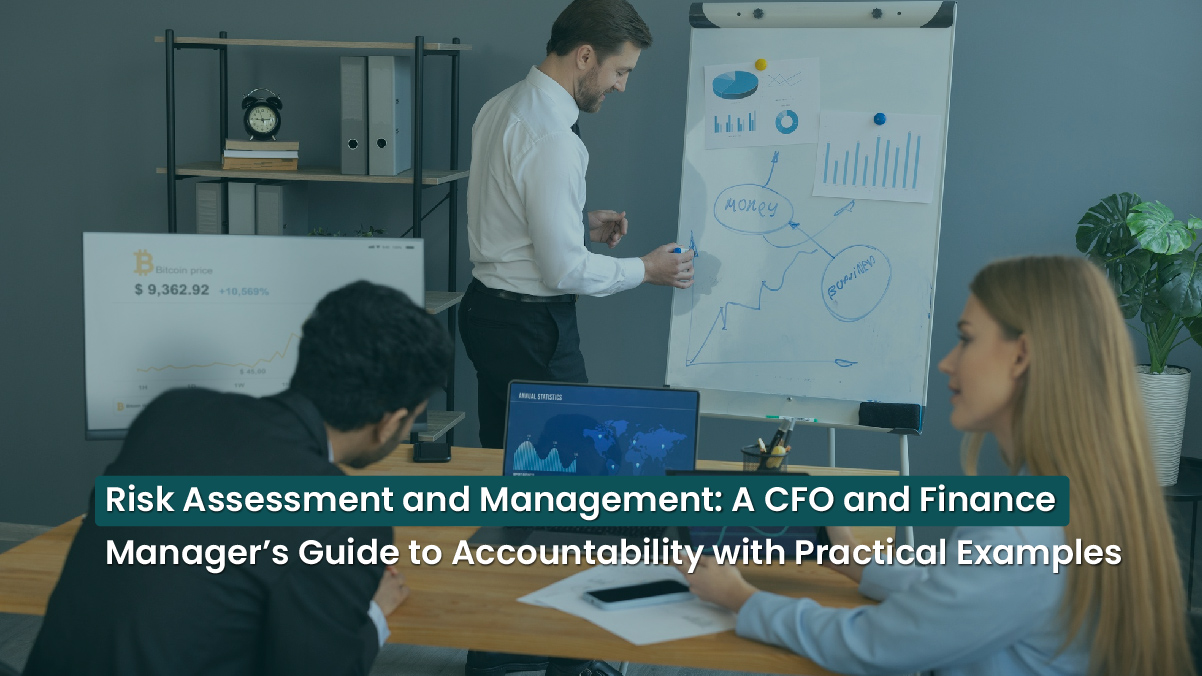As a CFO or Manager of Finance, Risk Assessment and Management is a critical aspect of ensuring the organization’s financial health and sustainability. Below is a structured approach with practical examples to address this responsibility:
Risk Assessment
Identify Risks
Financial Risks: Revenue shortfalls, cost overruns, liquidity issues, currency exchange fluctuations, interest rate changes, and financial risk assessment.
- Example: Anticipating a potential liquidity crunch due to delayed receivables.
Operational Risks: Inefficient processes, supply chain disruptions, or technological failures.
- Example: Identifying dependency on a single supplier for raw materials.
Regulatory Risks: Compliance failures or changes in tax laws.
- Example: New tax regulations affecting profit margins.
Market Risks: Economic downturns, competitor actions, or changes in consumer preferences.
- Example: Decreased demand for a flagship product due to market competition.
Strategic Risk Assessment: Poor business decisions or failure to adapt to industry trends.
- Example: Expansion into a market without proper research leading to losses.
Quantify Risks
Leverage quantitative methods like sensitivity analysis, scenario planning, or financial modeling.
- Example: Simulating a 10% drop in revenue to estimate its impact on net profits.
Risk Management
1.Mitigation Strategies
Financial Controls: Implement strict budgeting, forecast cash flows, and create contingency funds.
- Example: Maintaining a reserve fund equal to 3 months of operating expenses.
Diversification: Diversify revenue streams and suppliers.
- Example: Expanding to online sales channels to reduce reliance on physical stores.
Hedging: Use financial instruments to protect against currency and interest rate fluctuations.
- Example: Forward contracts to lock in favorable currency exchange rates.
Compliance Framework: Develop robust systems to ensure adherence to legal and regulatory requirements.
- Example: Automating tax compliance using specialized software.
2.Monitoring and Reporting
Regularly review Key Risk Indicators (KRIs) alongside Key Performance Indicators (KPIs).
- Example: Monitoring debt-to-equity ratio as a financial health indicator.
Periodic risk assessments and audits.
- Example: Quarterly reviews of internal controls to ensure effectiveness.
3. Contingency Planning
Develop response plans for high-priority risks.
- Example: A business continuity plan in case of an IT system failure, including backup servers and data recovery procedures.

4.Stakeholder Engagement
Communicate risk policies to stakeholders and involve them in decision-making.
- Example: Presenting risk management strategies to the board and gaining approval for risk mitigation budgets.
Practical Example: Risk Management in Action
Scenario: A manufacturing company faces a potential risk of rising raw material costs due to geopolitical tensions, highlighting the importance of Risk Assessment and Management in mitigating financial risks.
Risk Assessment:
- Identify: Rising material costs due to supply chain disruptions.
- Quantify: A 15% rise in raw material prices could reduce profit margins by 10%.
- Prioritize: High impact, medium likelihood.
Risk Management:
Mitigation:
- Negotiate long-term contracts with multiple suppliers.
- Stockpile critical raw materials during periods of stability.
Monitoring:
- Track commodity price trends and geopolitical developments.
Contingency Plan:
- Budget for alternative suppliers even if costs are slightly higher in the short term.
Empowering Financial Stability Through Strategic Risk Management and Proactive Solutions.



